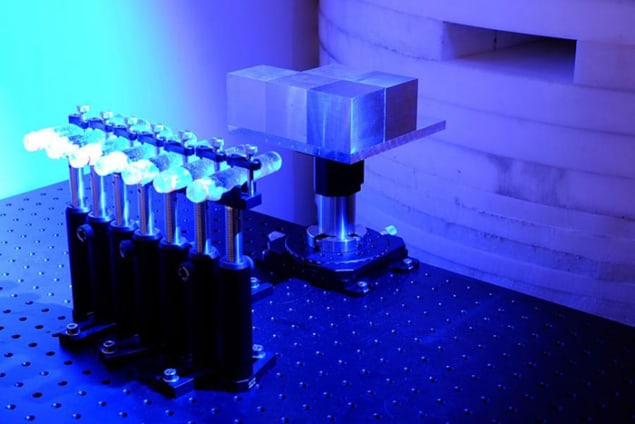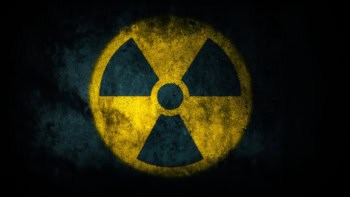
A new technique for comparing physical objects – while keeping the composition of the objects secret – has been demonstrated by physicists in the US and Italy. Based on a scheme for cryptography, the method involves comparing how radiation is transmitted through two targets and could be used to verify the presence of nuclear weapons in warheads.
Future agreements on the control of nuclear weapons could require that all nuclear warheads be accounted for, including those in storage. This would rely on inspectors being able to tell a real nuclear warhead apart from a fake one. This is important because it would prevent a country from secretly stashing away some of its declared warheads and replacing them with fakes.
Plutonium-239 in a concealed warhead can be revealed by exposing it to a beam of neutrons and measuring how much radiation passes through the warhead. However, imaging a warhead in this way – which is like taking a medical X-ray – would also reveal information about the weapon’s design. That’s a problem because the design needs to be kept secret – even from inspectors – to prevent nuclear proliferation. One way around this problem is to scramble some of the information, but this is open to abuse by both parties.
Zero-knowledge proof
In 2014 Alexander Glaser and Robert Goldston at Princeton University and a colleague at Microsoft Research came up with a proposal for how to compare the contents of two warheads to confirm that they were indeed identical. Their technique is based on the “zero-knowledge proof”, which is described in detail in “Nuclear-inspection protocol inspired by game of marbles”.
Now, Glaser and Goldston have teamed-up with Princeton’s Sébastien Philippe and Francesco d’Errico at Yale University and the University of Pisa to test the protocol in the lab using neutron radiography. Instead of looking at real nuclear warheads, the team used a set of 5 cm steel-and-aluminium cubes that could be arranged in different configurations.
Steel and aluminium absorb neutrons at different rates, enabling the team to mimic the composition of a real warhead, which is made of several different materials. One such arrangement was designated the “true” configuration, which in a verification process would correspond to a warhead that is known to be armed with a nuclear weapon.
The verification process begins by taking an image of the true configuration of blocks that are hidden within a metal shield. This is done by firing a beam of neutrons through the objects and onto an array of “bubble” neutron detectors. These detectors comprise a viscous gel that contains superheated droplets of a fluorocarbon.
If a neutron collides with an atom in a droplet, the absorbed energy causes the droplet to vaporize and create a much larger bubble. An important feature of the detectors is that the bubbles will remain in place for days until the detector is reset. The positions of these bubbles can then be determined by taking a digital photograph of the detector.
Inverse image
This image of the true object is then analysed and an “inverse” image is calculated. When combined with a true image, the sum is what the detectors would register if there were no object being scanned.
The next step is to create the pattern of bubbles associated with the inverse image in a fresh array of detectors. This is done by irradiating them with the appropriate neutron beams. In a real inspection of a nuclear warhead, all of the above steps would be done by the owner of the warhead so that no information is revealed to the inspector.
The final step involves the inspector using the “preloaded” array of detectors to scan an unknown configuration of blocks. If the unknown is indeed the true configuration of blocks (or a real nuclear warhead), then the pattern of bubbles in the detectors will correspond to that expected when no object is in the path of the neutrons. If the blocks do not match the true configuration, then a different pattern will be seen. By looking at the pattern, the inspector can tell if the unknown object is a nuclear warhead without knowing what it, or a nuclear warhead, actually look like.
First demonstration
The team was able to confirm that the technique can be implemented using neutrons and bubble detectors. “This is the first experimental demonstration of a physical zero-knowledge proof,” says Philippe, adding: “We have translated a major method of modern cryptography devised originally for computational tasks into use for a physical system.”
Challenges will still need to be overcome before the technique can be put into practice. These include ensuring that the owner of the warheads actually generates the inverse pattern from a nuclear warhead, and not a decoy weapon. Another problem is that electronic processing is required to make the inverse image, which could be subject to eavesdropping that could reveal information about the composition of the warhead. Detectors loaded with the inverse image would also have to be kept secure as they contain information about the warhead.



